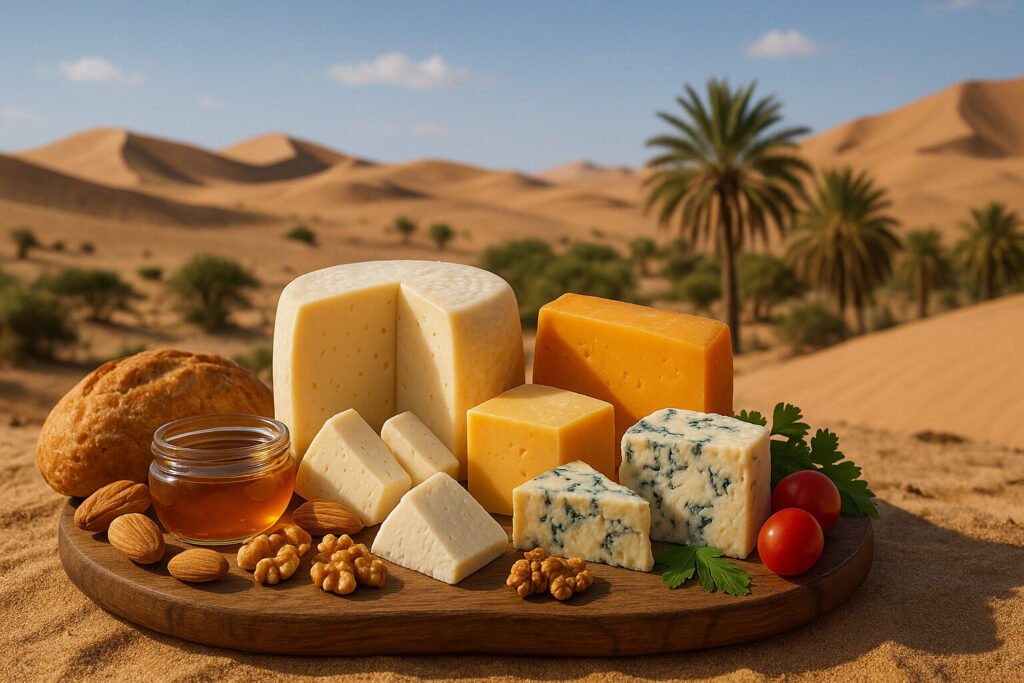Cheese Of United Arab Emirates
Definition and Scope
Cheese in the United Arab Emirates represents a blend of traditional Bedouin methods and modern industrial production. These cheeses often utilize cow, goat, or camel milk, reflecting the region’s available livestock. The category includes fresh, brined, and processed varieties tailored to local tastes and preservation needs in a hot climate.
Emirati cheese production is characterized by adaptations to high temperatures, leading to a prevalence of salted and brined cheeses. These methods inhibit spoilage and align with historical food storage practices. The scope encompasses both artisanal creations for local consumption and commercially produced cheeses distributed throughout the Gulf region.
Production Techniques
Traditional Emirati cheese-making involves simple acid or rennet coagulation of milk, followed by pressing and salting. Brining is a common technique, where cheeses are submerged in saltwater solutions to extend shelf life. This process results in a characteristic salty flavor and semi-soft texture that distinguishes many local varieties.
Modern facilities employ pasteurization and controlled fermentation to ensure consistency and food safety. Industrial producers often incorporate vegetable rennet and stabilizers to meet market demands. Both methods maintain the high salt content crucial for preservation in the UAE’s demanding climate conditions.
Sensory Profile
Emirati cheeses typically present a pronounced salty taste derived from brining processes. Their textures range from crumbly fresh cheeses to elastic, semi-soft brined varieties. Mild acidity and minimal flavor complexity are common, making them versatile bases for other ingredients.
The aroma profile tends to be mild and milky with subtle fermented notes. Brined cheeses exhibit a characteristic squeaky texture when bitten. Color ranges from bright white in fresh cheeses to pale yellow in aged versions, with minimal rind development in most commercial products.
Culinary Applications
These cheeses feature prominently in traditional Emirati breakfast spreads, often served with dates and bread. They are commonly crumbled over salads or incorporated into baked dishes where their saltiness enhances other ingredients. Street food vendors use melted Emirati cheese as fillings for sandwiches and pastries.
Modern applications include pizza toppings and cheese blends for international dishes adapted to local preferences. Their high melting point makes them suitable for grilled preparations. The salt content allows them to pair well with sweet accompaniments like honey and fruit preserves.
Regional Examples
Jameed represents a traditional dried yogurt cheese historically important in Bedouin cuisine. This rock-hard cheese is typically grated or dissolved in water to create sauces for meat dishes. Its preservation method made it ideal for nomadic lifestyles in the Arabian Peninsula.
Contemporary examples include various brined white cheeses produced by major UAE dairy companies. These products often carry generic names like “White Cheese” or “Halloumi-style Cheese” while adapting to local manufacturing capabilities. Camel milk cheeses represent an emerging category leveraging indigenous resources for specialty markets.

